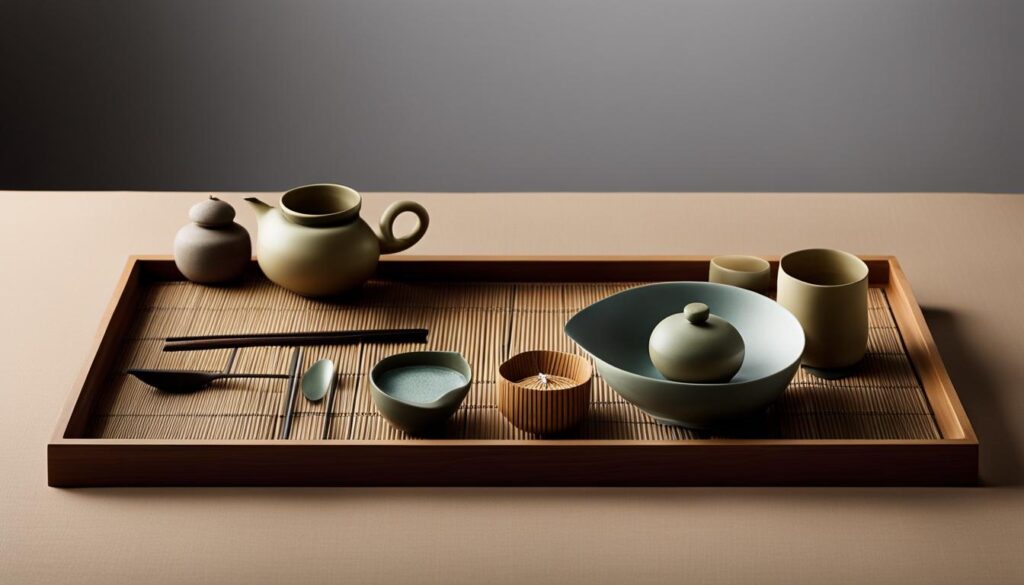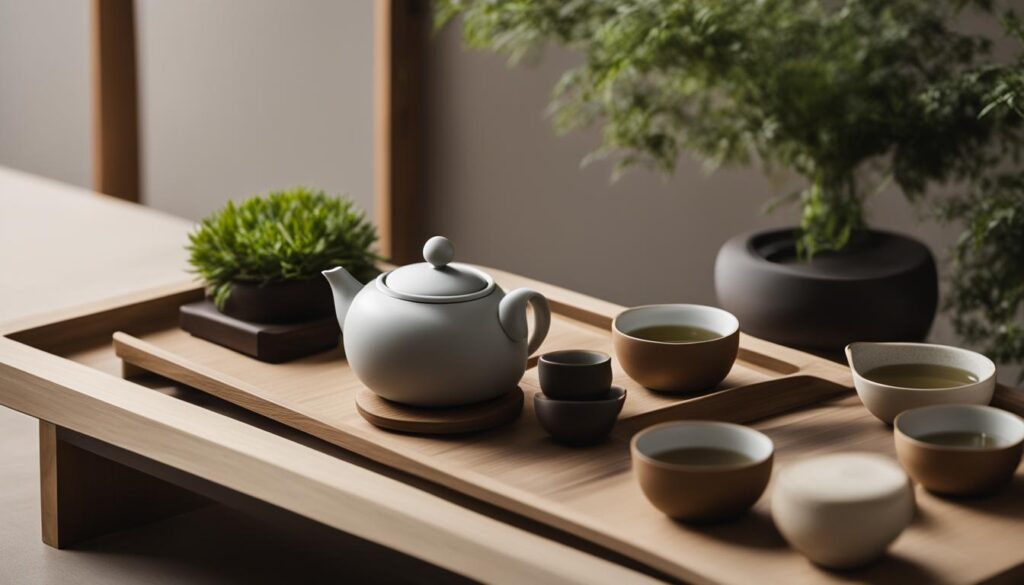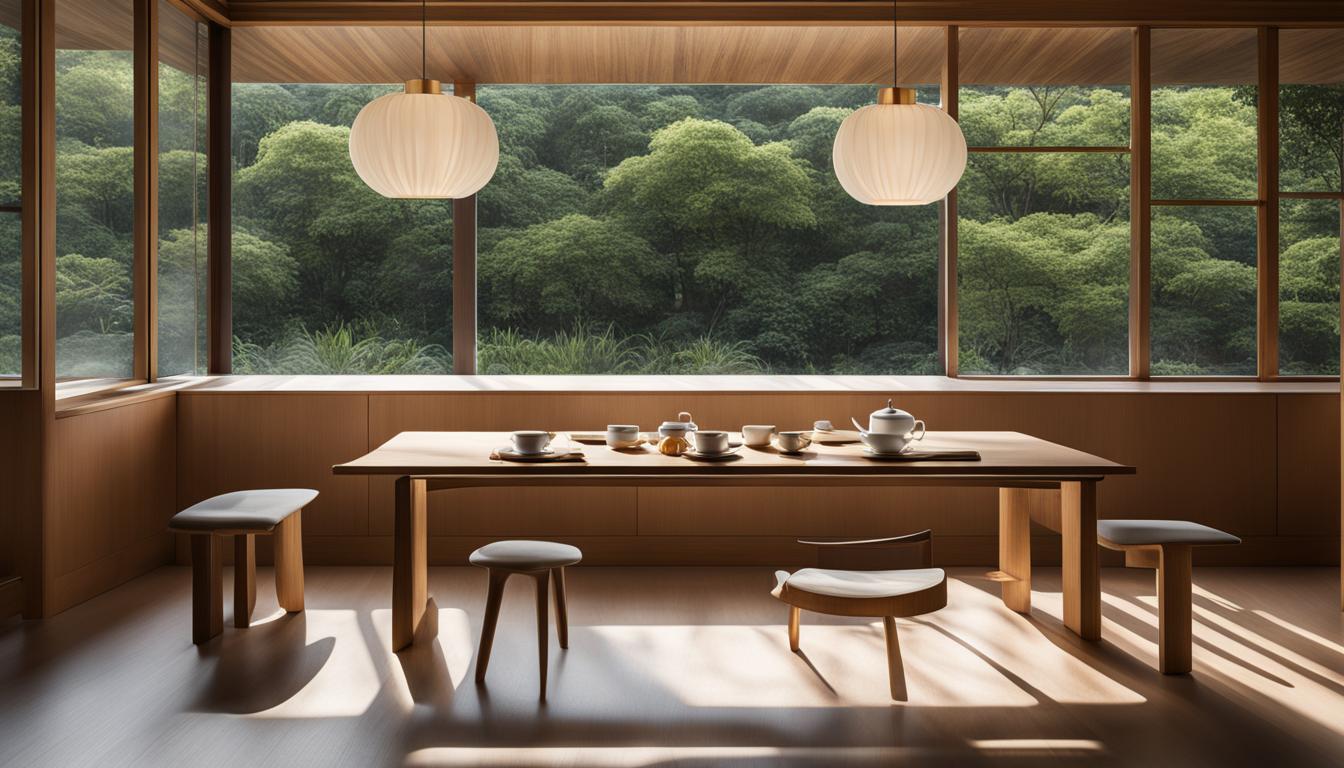Welcome to our exploration of modernized tea ceremonies! In this article, we delve into the fascinating world of tea culture, where ancient traditions meet contemporary practices. Discover how tea ceremonies have evolved to captivate audiences in today’s fast-paced, diverse world.
The Historical Significance of Tea Culture in China
Tea holds immense cultural significance in China, deeply ingrained in the country’s history, traditions, and way of life. For centuries, tea has played a pivotal role in Chinese culture, representing more than just a beverage. It serves as a symbol of harmony, respect, and connection with nature and has influenced various aspects of Chinese society, including medicine, rituals, religion, and the economy.
The origins of tea in China can be traced back thousands of years, with legends attributing its discovery to the Emperor Shennong, also known as the “God of Medicine.” According to myth, the emperor discovered the medicinal properties of tea when tea leaves accidentally fell into his boiling water. This marked the beginning of tea’s journey in Chinese culture, where it became an integral part of everyday life.
“Tea is the elixir of life for the people of China. It awakens the mind, calms the spirit, and nourishes the body.” – Ancient Chinese Proverb
Tea has captivated artists, writers, and philosophers throughout Chinese history. It has inspired poetry, paintings, and traditional ceremonies, all reflecting the spiritual and philosophical aspects of tea culture. The Chinese tea ceremony, known as “Gongfu Cha,” emphasizes precision, attention to detail, and the art of tea brewing. It involves meticulously preparing and serving tea, paying homage to the beauty and harmony found in nature. The ceremony is accompanied by elegant tea sets, delicate tea cups, and a serene atmosphere that encourages contemplation and mindfulness.
Tea and Chinese Culture: A Closer Look
The significance of tea in Chinese culture extends beyond its ceremonial practices. It has also played a vital role in trade and the economy, with tea leaves being one of China’s major exports. The Tea Horse Road, a network of ancient trade routes, facilitated the exchange of tea and other goods between China, Tibet, and Central Asia. This trade route not only connected different regions but also facilitated cultural exchange and influenced the development of tea cultures in different parts of the world.
From the tranquil tea gardens of Hangzhou to the bustling tea markets of Chengdu, tea culture continues to thrive in China. It remains a vital part of daily life, whether enjoyed during family gatherings, shared among friends, or savored in moments of solitude. Chinese tea rituals celebrate the art of brewing and drinking tea, allowing individuals to connect with themselves, others, and the world around them.
| Chinese Tea Rituals | Meaning |
|---|---|
| Gongfu Cha | Emphasizes the art of brewing tea with precision and attention to detail |
| Yum Cha | A social tradition of drinking tea and enjoying dim sum |
| Longjing Tea Ceremony | Celebrates the beauty and flavors of Longjing tea, also known as Dragon Well tea |
| Chadao | The Way of Tea; focuses on the philosophy, spirituality, and meditation associated with tea |
With its rich history, rituals, and cultural significance, tea continues to be a beloved beverage in China, embodying the harmony between nature and humanity. The practice of tea ceremonies provides a space for individuals to experience tranquility, mindfulness, and a deep connection with themselves and the world. Whether it’s a traditional Gongfu Cha ceremony or a casual gathering with friends, tea culture remains a treasured and timeless tradition in Chinese society.
The Art of the Japanese Tea Ceremony
The Japanese tea ceremony, also known as Sado, is a revered ancient tradition that embodies respect, harmony, and tranquility. Rooted in Zen Buddhism, the ceremony has evolved to incorporate aesthetic and ritualistic elements, captivating participants with its grace and elegance.
Traditional tea ceremonies can last for hours and require extensive training to master the intricate rituals and proper etiquette. However, in today’s modern age, tea ceremony practices have been adapted to accommodate a wider audience. This includes tea ceremony training programs specifically designed for cafés, allowing individuals to experience the artistry of Sado in a more accessible and approachable manner.

“The Japanese tea ceremony is like a choreographed dance, each movement deliberate and purposeful, creating a serene atmosphere that transports participants into a world of tranquility.”
These training programs offer aspiring tea enthusiasts a glimpse into the rich cultural heritage of Japan while providing them with the necessary knowledge and skills to prepare and serve tea in accordance with traditional Japanese customs. By integrating tea ceremony practices into café settings, the essence of Sado can be shared with a broader audience, fostering a deeper appreciation for this ancient art form.
Tea Ceremony Training for Cafés
The modernization of tea ceremonies has led to the development of specialized training programs catered to cafés. These programs not only teach the technical aspects of preparing and serving tea but also emphasize the importance of creating a serene and welcoming environment for customers. Participants learn how to cultivate mindfulness and create a sense of connection and tranquility, offering diners a unique and immersive tea experience.
Tea ceremony training for cafés also extends beyond the art of tea preparation. It encompasses elements of Japanese culture, such as traditional tea room design, calligraphy, and the appreciation of ceramics. This holistic approach ensures that the café environment reflects the spirit of Sado, elevating the overall tea-drinking experience for customers.
| Benefits of Tea Ceremony Training for Cafés | Benefits for Cafés |
|---|---|
| Enhances customer experience | Attracts tea enthusiasts |
| Promotes mindfulness and relaxation | Increases customer loyalty |
| Creates a unique selling point | Generates positive word-of-mouth |
By incorporating the art of the Japanese tea ceremony into café settings, establishments can provide a memorable and captivating experience for customers while honoring and preserving the cultural heritage of Sado. Whether sipped in a traditional tearoom or a contemporary café, a cup of tea becomes a portal to tranquility and a moment of respite from the bustling pace of modern life.
Modernizing the Tea Ceremony Experience
When it comes to tea ceremonies, tradition and modernity can coexist harmoniously. Modern interpretations of tea ceremonies focus on integrating innovative tea ceremony equipment and adjusting traditional rituals to suit the needs and preferences of contemporary individuals. By combining the rich cultural heritage of tea ceremonies with modern living, these adaptations create a unique and captivating experience that appeals to a wider audience.
One aspect of modernizing tea ceremonies is the incorporation of modern tea sets and equipment. These innovative pieces not only enhance the visual appeal of the ceremony but also make the process more convenient and accessible. From sleek teapots with built-in infusers to electric kettles that heat water to the perfect temperature, modern tea ceremony equipment adds a touch of convenience to the traditional practice. These advancements allow participants to enjoy the essence of the tea ceremony while embracing the ease and efficiency of modern technology.
Another way tea ceremonies are being integrated into modern living is through the design of tea rooms. Traditionally, tea rooms are designed with minimalist decor, creating a serene and meditative environment. However, modern interpretations of tea ceremonies take this a step further by incorporating comfortable seating options and creating a more relaxed atmosphere. By making the tea room a cozy and inviting space, tea ceremonies become more accessible to individuals who may not be accustomed to the formalities of traditional settings.
Modern tea ceremonies also adapt the timing and duration of the rituals to suit modern lifestyles. While traditional tea ceremonies can last for hours, modern interpretations offer shorter and more condensed versions, allowing busy individuals to experience the essence of the ceremony without compromising their schedules. This flexibility ensures that tea ceremonies can be enjoyed by a wider audience, regardless of their time constraints.
| Traditional Tea Ceremony | Modernized Tea Ceremony |
|---|---|
| Long duration (hours) | Shorter duration (30 minutes to an hour) |
| Elaborate and intricate rituals | Simplified and condensed rituals |
| Strict adherence to traditional practices | Adapted rituals to suit contemporary preferences |
| Formal and structured setting | Relaxed and accommodating environment |
In conclusion, modernizing the tea ceremony experience is all about finding a balance between tradition and contemporary culture. By incorporating innovative tea ceremony equipment, designing tea rooms that cater to modern sensibilities, and adjusting the duration and rituals to suit modern lifestyles, tea ceremonies can be enjoyed by a wider audience. These adaptations ensure that the essence and beauty of tea culture are preserved while making it relevant and accessible in today’s fast-paced world.
Tea Ceremonies and Mindfulness
Tea ceremonies have a deep connection with mindfulness, offering a serene and contemplative experience that allows participants to fully embrace the present moment. The practice of tea ceremonies encourages us to slow down, disconnect from distractions, and find tranquility in the simple act of brewing and sipping tea. It provides a much-needed escape from the fast-paced, digital world, allowing us to connect with ourselves and others on a deeper level.
During a tea ceremony, every step is performed with intention and mindfulness. From the precise measurements of tea leaves and water to the careful preparation of the tea utensils, each action is executed with grace and focus. This heightened state of mindfulness helps to cultivate a sense of calm and inner peace, allowing participants to let go of stress and worries.
“In the stillness of the tea ceremony, we find a sanctuary for our minds and hearts, a place where we can be fully present and at peace.”
Tea ceremonies provide a space for reflection and self-awareness. As we engage in the ritual of preparing and drinking tea, we become more attuned to our senses, noticing the aroma, taste, and texture of the tea. This sensory experience grounds us in the present moment, fostering a greater appreciation for the simple pleasures in life.
The Benefits of Tea Ceremony and Mindfulness
The practice of tea ceremonies and mindfulness has been found to have numerous benefits for our well-being. Research suggests that engaging in mindfulness practices like tea ceremonies can reduce stress, improve focus and concentration, and enhance emotional well-being. By consciously immersing ourselves in the tea ceremony experience, we cultivate a greater sense of self-awareness and develop skills to navigate life’s challenges with grace and equanimity.
| Benefits of Tea Ceremony and Mindfulness | References |
|---|---|
| Stress reduction | National Center for Complementary and Integrative Health |
| Improved focus and concentration | Journal of Psychosomatic Research |
| Enhanced emotional well-being | Journal of Happiness Studies |
Tea ceremonies offer a unique opportunity to incorporate mindfulness into our daily lives. Whether we choose to participate in a traditional tea ceremony or create our own mindful tea rituals at home, the practice allows us to slow down, reconnect with ourselves, and find solace in the present moment. By embracing tea as a way of life, we can nourish our mind, body, and spirit, and experience the profound benefits of mindfulness.

Organizing and Hosting Tea Ceremony Events
Organizing and hosting tea ceremony events can be a wonderful way to bring people together and celebrate the beauty of tea culture. Whether it’s a wedding, corporate event, or a social gathering, tea ceremonies can add a touch of elegance and tranquility to any occasion. The art of organizing such events requires careful planning and attention to detail, ensuring that every aspect of the ceremony is executed flawlessly.
For beginners interested in participating in tea ceremonies, attending workshops or classes can provide valuable insights into the basic rituals and etiquette. These immersive learning experiences not only teach the traditional practices but also offer a deeper understanding of the history and cultural significance of tea ceremonies. It’s a great opportunity to connect with like-minded individuals and explore the art of tea together.
When organizing a tea ceremony event, it’s essential to work with an experienced tea master who can guide you through the process. They can help curate the tea selection, create a serene ambiance, and ensure that the ceremony flows smoothly. A tea master’s expertise and knowledge are invaluable in creating a memorable and authentic tea ceremony experience for both the host and the guests.
Hosting a Tea Ceremony Event: Step-by-Step Guide
- Select a Suitable Venue: Choose a location that can accommodate the number of guests and provides a serene and intimate setting.
- Choose the Tea Selection: Consult with the tea master to select a variety of teas that cater to different tastes and preferences.
- Prepare the Tea Ceremony Setting: Decorate the space with traditional elements such as tatami mats, low tables, and hanging scrolls to create an authentic atmosphere.
- Arrange the Tea Utensils: Set up the necessary tea utensils, including teapots, tea bowls, and tea whisks, in an organized and aesthetically pleasing manner.
- Follow the Rituals and Etiquette: Ensure that the host and guests are familiar with and follow the proper rituals and etiquette of the tea ceremony.
- Serve Tea and Accompanying Treats: Offer guests a variety of teas and traditional sweets to complement the tea experience.
- Facilitate a Moment of Reflection: Allow guests to savor the tea and embrace the tranquility of the moment, encouraging mindfulness and connection.
- Offer an Opportunity for Q&A: Provide a platform for guests to ask questions and learn more about the tea ceremony and its cultural significance.
- Express Gratitude and Farewell: Conclude the ceremony by expressing gratitude to the tea master and guests and bidding them farewell.
Hosting a tea ceremony event requires patience, attention to detail, and a genuine passion for tea culture. By creating a serene and immersive experience, you can introduce others to the beauty and tranquility of tea ceremonies, fostering a deeper appreciation for this timeless tradition.
Conclusion
In conclusion, modernizing tea ceremonies allows us to preserve the cultural traditions and make them relevant and accessible to today’s contemporary culture. By incorporating innovative tea ceremony equipment and adjusting traditional rituals, we can create a harmonious and enjoyable tea ceremony experience for participants.
The integration of tea ceremonies into modern living, with minimalist decor, comfortable seating options, and modern tea sets, showcases the adaptability of this ancient practice. This allows more individuals to engage in tea ceremonies and experience the serenity and connection it offers.
Furthermore, tea ceremonies have a strong connection to mindfulness and introspection. The practice encourages us to slow down, be present in the moment, and find relaxation and stress reduction. By incorporating tea ceremonies into our daily lives, we can foster a sense of mindfulness and create a deeper connection with ourselves and others.
Hosting tea ceremony events and promoting tea ceremony training are great ways to bring the beauty and tranquility of tea culture to a wider audience. Whether it’s for weddings, corporate events, or social gatherings, organizing tea ceremonies requires careful planning and the expertise of an experienced tea master. This ensures that participants can have an authentic and meaningful tea ceremony experience.
FAQ
What is the historical significance of tea culture in China?
Tea holds great importance in Chinese culture, representing aspects of medication, rituals, religion, and the economy. It has influenced all aspects of Chinese society, captivating artists, writers, and philosophers. The philosophy and spiritual aspects of tea culture have deep roots in Chinese history and traditions.
What is the art of the Japanese tea ceremony?
The Japanese tea ceremony, known as Sado, is an ancient tradition that represents respect, harmony, and tranquility. Originally associated with zen Buddhism, the ceremony has evolved to include aesthetic and ritualistic elements. Traditional tea ceremonies can last for hours and require extensive training, but modern interpretations have made it more accessible.
How can tea ceremonies be modernized for today’s contemporary culture?
Modern interpretations focus on incorporating innovative tea ceremony equipment and adjusting traditional rituals to suit modern lifestyles. This involves creating tea rooms with minimalist decor, providing comfortable seating options, and using modern tea sets. The goal is to create a harmonious and enjoyable tea ceremony experience for participants.
What is the connection between tea ceremonies and mindfulness?
The practice of tea ceremonies encourages participants to slow down, disconnect from distractions, and be fully present in the moment. The quiet and contemplative nature promotes relaxation, stress reduction, and a deep sense of connection with oneself and others. Many individuals find tea ceremonies to be a way of incorporating mindfulness into their daily lives.
Can tea ceremony events be organized for special occasions?
Yes, tea ceremony events can be organized and hosted for various occasions, such as weddings, corporate events, and social gatherings. Beginners can also participate by attending workshops or classes to learn the basic rituals and etiquette. The organization of tea ceremony events requires careful planning, attention to detail, and the expertise of an experienced tea master.





